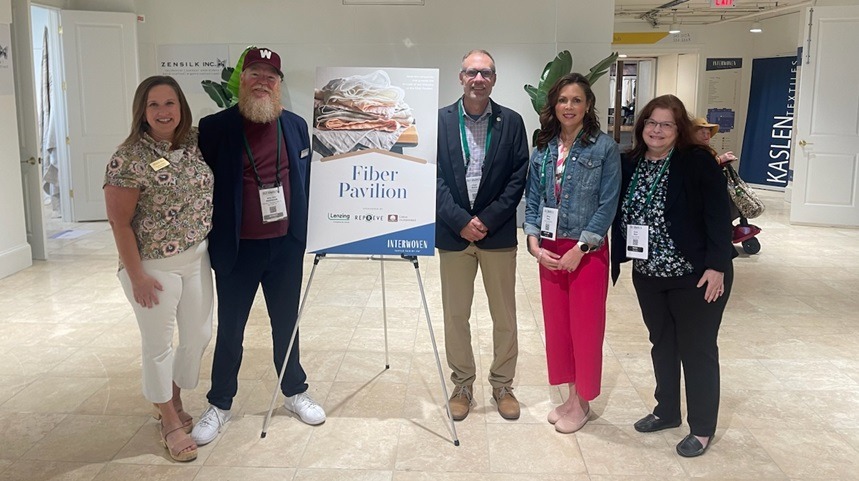
HIGH POINT — Sustainability can be more than a buzzword, according to three textile industry veterans onstage for a panel discussion at the recent Interwoven Textile Show.
As part of the “Fiber Evolution: Exploring Trends in Fabric Life Cycles” session, Chad Bolick, vice president of global brand sales, Unifi Mfg.; Walter Bridgham, senior business development manager of Lenzing Group; and Marcy Gang, executive account manager of global supply chain marketing for Cotton Inc., talked about how innovations are transforming the textile industry and increasing fabric life cycles beyond previous limitations.
The panel was moderated by Anne Flynn-Wear, assistant managing editor for Furniture Today/Home Accents Today.
“Our branding sets us apart, and we continue to push the envelope about where to find sustainable solutions,” said Bridgham, explaining how Lenzing approaches sustainable sourcing and how the company sets itself apart in promoting environmentally responsible fabric life cycles.
He explained that Lenzing is constantly looking for new ways to be more sustainable and move further with its sustainability efforts. “We look at waste and see how we can reuse any part of it within our company.”
Bolick said transparency and collaboration with partners are a focus for Unifi when working toward increased sustainability.
“We work with mills to bring end-of-life products to be turned back into yarn,” he said. “We have a traceable and transparent supply chain.”
Gang said that cotton is the original circular fiber and that 100% of the plant can be used in some way.
“Any and all waste can be recycled, and cotton is compostable and biodegradable,” she said, noting that cultivation and processing methods directly align with the principles of sustainability.
Gang also shared information about a program called Blue Jeans Go Green, which encourages consumers to donate old denim jeans (from Levi, Free People, Anthropologie, etc.) to partner retailers. The denim is then recycled into insulation to replace fiberglass, which is not a sustainable material.
“That is one of the ways to replace non-renewable materials,” Gang said.
When asked about how consumer-driven shifts in textile preferences influence their approaches to fabric innovation and sustainability, the panelists explained that it is a change that is ever evolving.
“Sustainable evolution started in the outdoor companies and now it is shifting into the home market,” said Bolick. “We continue to innovate and develop products to enlarge our sustainable platform.”
Gang said consumers like the idea of sustainability but do not fully understand it. “It is up to us to educate the consumers,” adding that marketing efforts can help better explain to consumers how sustainability works and what it means.
“It’s a marathon, not a sprint,” said Bolick touching on what actionable insights the panelists would like the audience to take away. “Don’t get discouraged when you hit a roadblock. Although embracing sustainability might be challenging, it’s necessary to move the industry forward.”
Bridgham said that textile companies need to engage with new partners and think outside of the box. “Get the message out that you are doing your part to improve sustainability and reduce waste in this world, and like-minded companies will reach out to you.”
See also: Interwoven preview: Earth, land and sea
